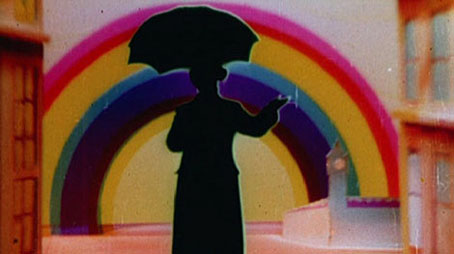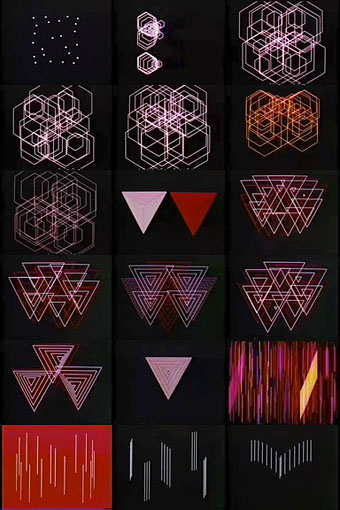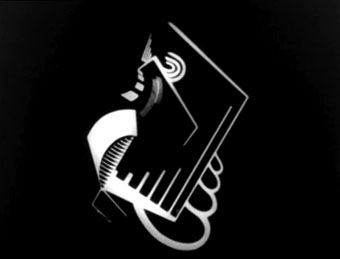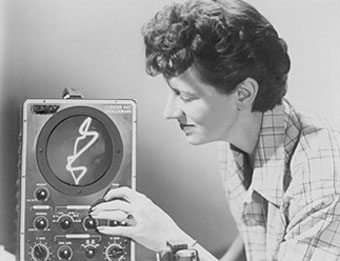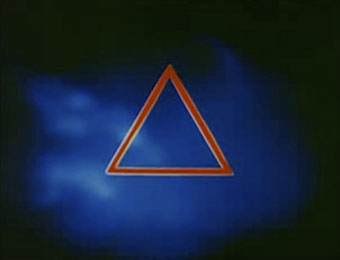Rainbow Dance (1936).
Fortunate Londoners can see a BFI screening of early film shorts by Len Lye (1901–1980) this Friday at the NFT. (Details here.) Lye is one of the pioneers of abstract cinema and his work still astounds for its inventiveness and playful interaction between synchronised image and music. Many of his works were created by painting directly onto the film strip, a technique later pursued by animators like Norman McLaren. Free Radicals has long been a favourite, created with nothing more than a drum track and scratches on black-and-white film; five minutes of hypnotic genius. The BFI programme list below features links to YouTube versions. Some are poor quality but worth watching all the same:
This slot is dedicated to Len Lye, a towering figure in experimental film. The films are: Tusalava (1929, 9min, silent); Peanut Vendor (1933, 2min); Kaleidoscope (1935, 4min); A Colour Box (1935, 3min); The Birth of a Robot (1936, 6min); Rainbow Dance (1936, 4min); Colour Flight (1937, 4min); Swinging the Lambeth Walk (1940, 4min); Rhythm (1957, 1min); Free Radicals (1958, 5min); Particles in Space (1966, 4min); Cameramen at War (1944, 14min); Everyday (dir Hans Richter, 1929, 17min). Approx 77min total.
Elsewhere on { feuilleton }
• The abstract cinema archive

